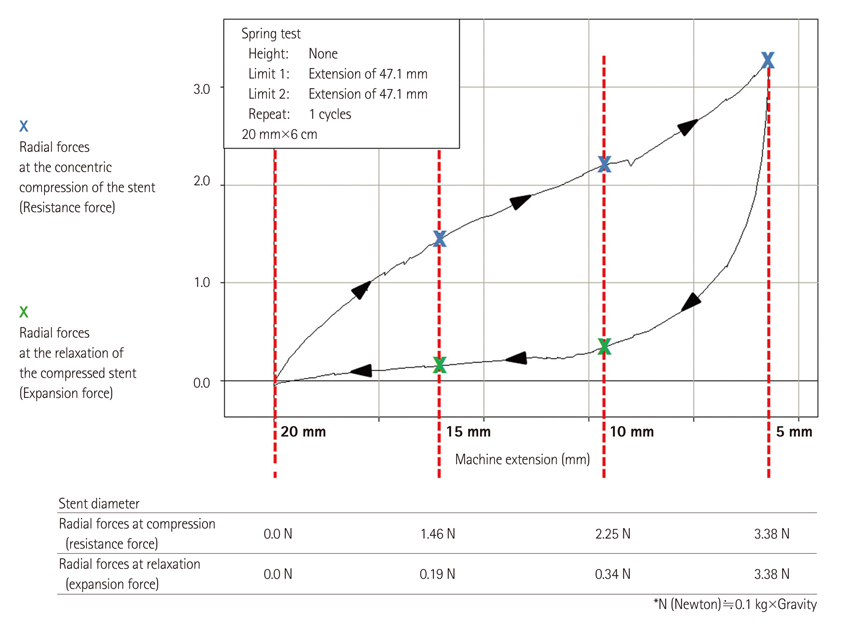Korean Circ J.
2013 Mar;43(3):207-211. 10.4070/kcj.2013.43.3.207.
An Adolescent Patient with Coarctation of Aorta Treated with Self-Expandable Nitinol Stent
- Affiliations
-
- 1Department of Pediatric Cardiology, Sejong Cardiovascular Center, Sejong General Hospital, Bucheon, Korea. wsshim01@gmail.com
- 2Department of Radiology, Sejong Cardiovascular Center, Sejong General Hospital, Bucheon, Korea.
- 3Department of Pediatric Cardiology, Samsung Medical Center, Seoul, Korea.
- KMID: 2224969
- DOI: http://doi.org/10.4070/kcj.2013.43.3.207
Abstract
- Transcatheter treatment of aortic coarctation, with balloon angioplasty or stent implantation, is now an acceptable alternative to surgical repair. However these procedures may result in complications, such as vascular wall injury and re-stenosis of the lesion. A nitinol self-expandable stent, when deployed at the coarctation site, produces low constant radial force, which may result in a gradual widening of the stenotic lesion leaving less tissue injury ('stretching rather than tearing'). For an adolescent with a native aortic coarctation, a self-expandable stent of 20 mm diameter was inserted at the discrete stenotic lesion of 5 mm diameter without previous balloon dilatation procedure. No further balloon dilatation was done immediately after the stent insertion. With the self-expandable stent only, the stenosis of the lesion was partially relieved immediately after the stent deployment. Over several months after the stent insertion, gradual further widening of the stent waist to an acceptable dimension was observed.
Keyword
MeSH Terms
Figure
Reference
-
1. Chessa M, Carrozza M, Butera G, et al. Results and mid-long-term follow-up of stent implantation for native and recurrent coarctation of the aorta. Eur Heart J. 2005. 26:2728–2732.2. Kische S, Schneider H, Akin I, et al. Technique of interventional repair in adult aortic coarctation. J Vasc Surg. 2010. 51:1550–1559.3. Golden AB, Hellenbrand WE. Coarctation of the aorta: stenting in children and adults. Catheter Cardiovasc Interv. 2007. 69:289–299.4. Dyet JF, Watts WG, Ettles DF, Nicholson AA. Mechanical properties of metallic stents: how do these properties influence the choice of stent for specific lesions? Cardiovasc Intervent Radiol. 2000. 23:47–54.5. Stoeckel D, Pelton A, Duerig T. Self-expanding nitinol stents: material and design considerations. Eur Radiol. 2004. 14:292–301.
- Full Text Links
- Actions
-
Cited
- CITED
-
- Close
- Share
- Similar articles
-
- A successful stenting of the coarctation of aorta in a patient with acute pulmonary edema
- A Case Report: Implantation of Balloon-Expandable Stent for Coarctation of the Aorta, Associated with Congenital Mitral Stenosis
- Use of Covered Stents to Treat Coarctation of the Aorta
- A Case of Coarctation of the Aorta Treated with Balloon Angioplasty
- A Dual Expandable Nitinol Stent: The Long-term Results in Patients with Malignant Gastroduodenal Strictures






